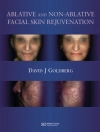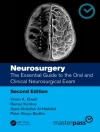Lung cancer is the leading cause of cancer-related death among men and women in the U.S. and worldwide. For many decades, lung cancer was the sole cancer among the deadly four without an evidence-based screening method for decreasing mortality. This changed in November 2011, when findings from the National Lung Cancer Screening Trial showed low-dose lung CT screening was more efficacious in reducing deaths in high-risk individuals than conventional radiography. As such, an ever-increasing number of health organizations now recommend this screening protocol.
Lung Cancer Screening by Mark Parker and esteemed VCU Health colleagues, fulfills the dire need for a comprehensive guide explaining the crucial aspects of lung cancer screenings. The first two chapters lay a foundation with discussion of lung cancer epidemiology and risk factors beyond cigarette smoking. Subsequent chapters cover the fundamentals, with clinical pearls on setting up a successful lung cancer screening program, patient eligibility criteria, imaging variances of tumors in the lungs, screening pros and cons, and interpreting/reporting screening results.
- The evolution and future of lung cancer screenings
- Detection and management of unexpected incidental pulmonary and non-pulmonary findings
- Discussion of test cases utilizing the Lung-RADSTM risk-stratifying system for low-dose chest CT screenings
- Benefits and potential harms associated with mass lung cancer screening programs including false positive, false negative, and over-diagnosis rates
This state-of-the-art guide is essential reading for radiologists, oncologists, pulmonologists, and internists. It is a must-have bookshelf reference for hospital radiology and oncology departments, in particular for those setting up new lung cancer screening programs.
Inhoudsopgave
<p>1 Lung Cancer Epidemiology<br>2 Risk Factors for Lung Cancer<br>3 Evolution of Lung Cancer Screening<br>4 Lung Cancer Screening Pros and Cons<br>5 Variable Imaging Presentations of Lung Cancer<br>6 Lung Cancer–Screening Results Reporting<br>7 Detection and Management of Unexpected Incidental Pulmonary and Nonpulmonary Findings<br>8 Elements of a Successful Lung Cancer–Screening Program<br>9 Future of Lung Cancer Screening<br>10 Test Cases: Applying Lung CT Screening Reporting and Data System (Lung-RADS)</p>












